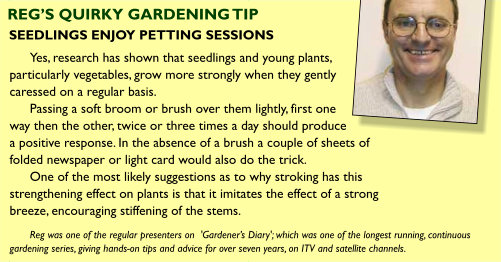 EARLY MAY
EARLY MAY
- Keep all newly planted items well-watered. This includes ones planted last autumn
- Sow seeds of herbaceous plants
- Sow or turf new lawns and keep mowing established ones – but not too low
- Treat difficult lawn weeds e.g. clovers, black medic with Scotts Weedol Lawn Weedkiller
- Plant out cabbage, cauliflower and other brassicas but take precautions against root fly
- Don’t forget your houseplants feed and water them regularly
MID MAY
- Sow suitable varieties of pansies to flower from autumn throughout the winter
- Sow biennials for flowering next spring onwards e.g. wallflowers, mysotis, sweet williams, foxgloves and honesty
- Plant out chrysanthemums for flowering in borders or for cutting
- Plant out summer bedding plants when frost risk is minimal
- Plant out sweet corn in blocks, rather than a long row, as they are wind pollinated
- Take cuttings from dahlias and chrysanthemums for flowering later in summer
- Plant tomatoes, peppers, aubergines, cucumbers etc. in a cold greenhouse
- Make up summer flowering hanging baskets and containers. Treat them with Bug Clear Ultra Vine Weevil Killer as a precautionary measure.
LATE MAY
- Prune clematis montana straight after flowering, if they are getting out of bounds
- Sow some half-hardy annuals for use a winter pot plants e.g. calceolarias, schizanthus and cinnerarias
- Beware of houseplants getting scorched on sunny windowsills
- Listen to the weather forecast in case of any nasty late frosts.
EARLY JUNE
- Mulches help to conserve water but the soil must be moist before they are applied
- Sow quick growing hardy annuals e.g. clarkia, Virginia stocks for late colour in dull spot
- When watering concentrate on climbers on walls, container and basket plants, newly planted items, dahlias, sweet peas, leafy veg. crops, celery and fruit bushes
- Dig up bare centred alpine plants, divide them re-planting the young pieces from around the edge
- June is one of the worst months for pest and disease attacks, so check plants regularly
MID JUNE
- Many climbing plants can be increased by layering at this time of year
- Mow the lawn to leave the grass 2.5cm (1in) tall. Makes grass more drought resistant
- Treat established lawns with a lawn weed killer but not if there is a drought
- Dead head rhododendrons after flowering to encourage new growth
- Watch out for cabbage white butterflies around your brassica plants
- Sow salad crops regularly, in small amounts, sowing the second row as the first emerges
- Tomatoes can be planted outdoors. Select a sheltered site and support the plants
- Lettuce will not germinate in hot weather. Sowing in moist drills in late evening helps
- Shade the greenhouse, ventilate it well and spray water over the floor to raise humidity
LATE JUNE
- Lift and divide flag iris after flowering. Re-plant young growths, keeping rhizomes above soil level
- Deadhead roses regularly to prolong flowering. Remove any “suckers” as soon as they appear
- Feed tomato plants regularly from when first fruits begin to form, using tomato food
- Take out one third of the older branches on deciduous shrubs, like Philadelphus, Weigela and Deutzia after flowering
- If pollen beetles infest your cut sweet peas, put them in water in a shed for a while. The Beetles will fly into the window, attracted by the light.

By
Reg Moule